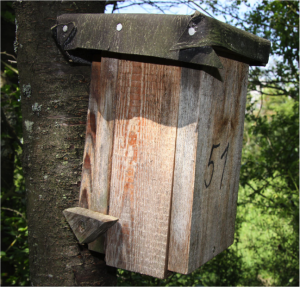The more natural a garden is designed, the more likely it is to be a paradise for a garden dormouse.
Endemic hedges, wild flower meadows and fruit trees are providing the menu for the garden dormouse. There the small omnivore finds insects, worms and snails as well as fruits, seeds and buds.
An old stock of fruit trees is particularly valuable, such as on orchards. There the garden dormouse will find sufficient food as well as tree hollows, which are used as hiding or nesting places. Welcome sleeping places for the nocturnal garden dormice also offer dense hedges, cairns or nest boxes.
Attention with the nest boxes: They must be from rough wood, so that the offspring manage to climb out of the nest box.
And don’t forget: Garden dormice need to drink water. Small water places are very welcome to them. However, uncovered rain barrels are a regular deadly trap.
What if it “moved” into house?
Sometimes garden dormice have already settled in houses and attract attention through their noise or gnawed objects. Attention: The garden dormouse is a protected species. It is advisable to displace them gently and to offer a shelter in the garden, e.g. special nest boxes for dormice as a resting place in summer. The entry possibilities for a garden dormouse into the house should be blocked with wire mesh or something similar – otherwise the garden dormouse is back quickly.
Tips for garden dormouse gardens
- Retain or create hiding places: hollow trees, wild shrubs and cairns are important retreats for the nocturnal garden dormouse.
- Help to preserve habitats: old orchards are not only a paradise for the garden dormouse; they are also a valuable habitat for countless other animals and plants.
- Provide special nest boxes
- Never use pesticides and rat poison in gardens
- Cover your rain barrels: With this simple measure you help to protect the garden dormouse from drowning.
More tips will follow
As part of the project, we will develop a concept for conservation measures from the results of our research. These will provide further tips on how to help garden dormice.
